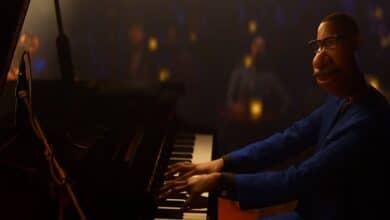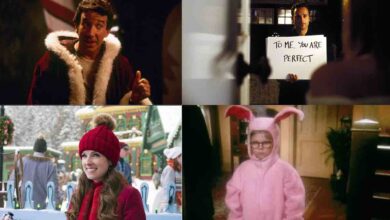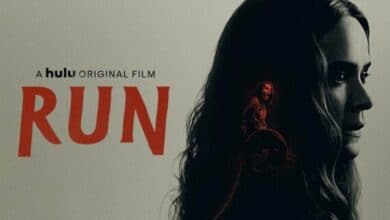While it fails to properly conclude several of its interesting set-ups, The Other Lamb is still visually wonderful with layered, nuanced performances that will surely hold your attention. It’s a flawed but still wholly interesting coming-of-age, cult story.
In the depths of a forested region, a cult of women serve as wives and daughters to a man named Shepherd (Michiel Huisman). Despite the current day setting, the women dress in garb from centuries past, as does Shepherd. One of the daughters, Selah (Raffey Cassidy), begins to question the nature of their lives together and see her holy leader in a more suspicious light, replete with dark visions. As she garners more of Shepherd’s incestuous attention, the threat of maturing into adulthood weighs on her greatly. Women’s blood is considered impure, and they are banished outside the camp while undergoing their periods where an unfavorable wife, Sarah (Denise Gough), looks after them. When pressure from the outside world necessitates that they move, Selah must grapple with her newfound worries while the cult travels across unforgiving and uncertain landscapes in search of a new home.
The visual sequences in The Other Lamb are striking. In fact, they are very likely the strongest aspect of the film. When coupled with Raffey Cassidy’s impressive lead performance, they provide a lot of clarity to Selah’s doubts in herself, in Shepherd, and in her whole way of life. Often, this is what we are clinging to. The movie is a slow burn, and information is rolled out through these glimpses into her mind. They allow us into Selah’s thought process. It’s unsettling and intriguing. Even given the narrative issues I will get into later, I would recommend the movie on the visual strength alone, which is to say it’s quite breathtaking.
For example, there is a moment when Selah is tasked to oversee the group’s flock of lambs. She is on a rock, in the mountains, and dressed from an era past. In the shot, a jet is streaking across the distant, crystal-blue sky. It was a beautiful bit of contrasting imagery. There are many moments when modern civilization creeps into the film, always subtly and always pointedly. Often, I would forget the era the film takes place in. I found myself lost in the cult, wrapped up in Shepherd’s world. You find yourself understanding how someone could remain under Shepherd’s spell. Isolation to this extent makes you forget there is anything outside your immediate surroundings. The world you are in is the only one that feels real, no matter how fabricated.
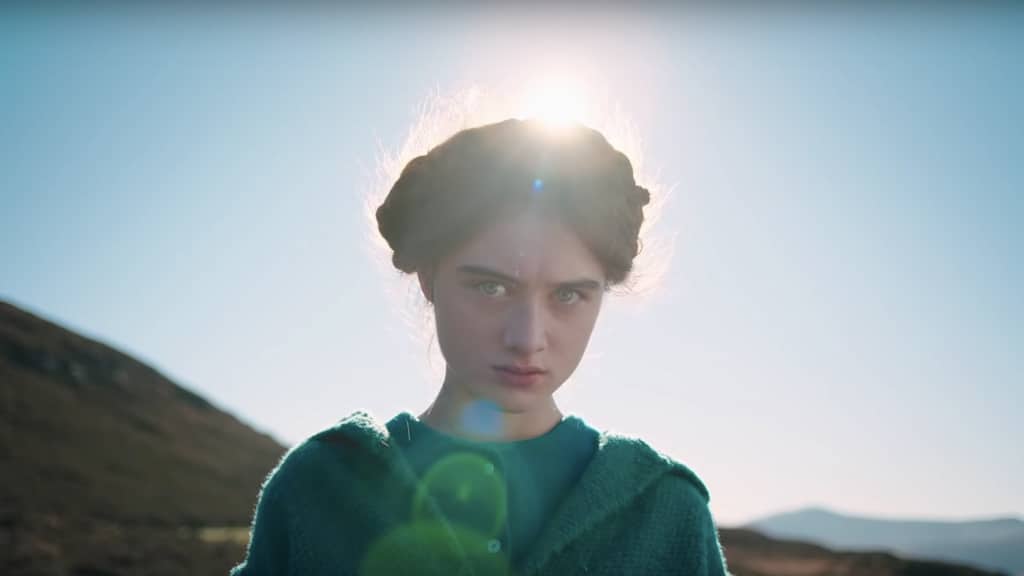
A sizable chunk of the movie takes place on the move. There are expansive landscapes all around our characters. They are trapped by nature. Yet, the modern world shows up just as you forget that it exists. A passing car or a curious cop, these are flashes of reality that Shepherd wants them to forget. To reject. The use of open spaces was intriguing for another reason. Many times, characters in movies are closed off, shut up, and locked away to convey their forced isolation and submission. Not here. At one point, while looking through an abandoned home, Selah becomes briefly fixated on a picture of a valley. It screams freedom. Yet, it looks like much of the landscape they have been traversing. But, that is the point, isn’t it? Freedom is not a setting. It isn’t the sort of place you can find physically. Anywhere can be a prison given the right kind of wholesale manipulation and control. Selah can find freedom in the same hills and mountains she is currently trapped in if she were able to escape from under Shepherd’s thumb. This large group of women are being controlled by one man. He does not allow room in their lives for the idea of a life without him. But, once someone begins to spread the idea that he does not have their best interests at heart; he is using them for his own purposes. His power begins to wane, and if enough people change how they see him, maybe the power dynamics will change too.
Midway in the movie when Selah gets her first period, she is banished outside the main group. She is under the care of Sarah who has been pushed to the side for her “vanity.” She doesn’t go into great detail, but it’s suffice to say she no longer finds any favor in Shepherd’s eyes. In talking to Sarah, Selah begins to have the perspective of her living deity altered. This is the movie’s intriguing peak and also the beginning of its downfall. Selah slowly having her eyes opened to her situation is a promising set up and one that never pays off. She and Sarah have a wonderful rapport. Sarah is such a tortured and broken soul. She is the end of the road for Selah. A possible outcome for her if she continues on this path. I very much enjoyed the movie when the two of them were together. There was a liveliness to the scenes they shared.
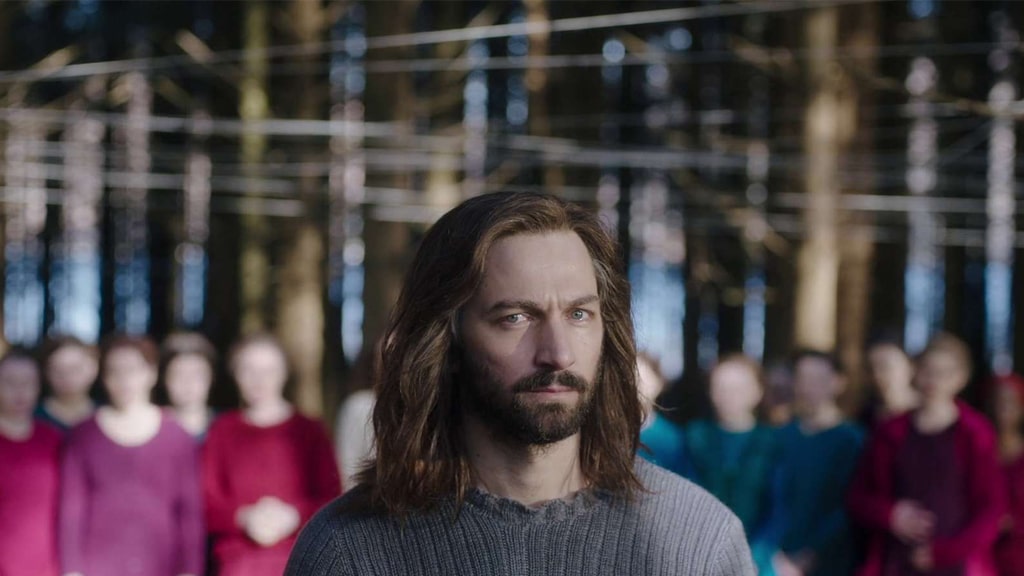
However, after Selah re-enters the main group, the movie nosedives fairly quickly.We have been on a slow, methodical journey for the last hour or so, and all of the sudden, the movie begins to sprint towards the finish line. I fail to understand how some characters see Shepherd differently. Its jarring and the final confrontation takes place largely offscreen. It’s very frustrating, because the whole film has been building up to this moment. For it to be offscreen makes many previous scenes feel like wasted time. There are still visceral moments in the 3rd act. A particular scene between Selah and Shepherd was upsetting and enraging. It solidified his monstrosity in a horrific way, and contextualized her determined stance against him moving forward. Unfortunately, the movie does not apply the same level of context to other characters. We don’t see people’s minds change. The movie needs an ending, therefore our characters think differently now. But, for people who have been brainwashed from birth to have even the slightest of changes in their perspective, we need to see it. We need to see cracks in Shepherd’s manipulative armor. The most we get is one scene of Shepherd lashing out at one of his followers. This scene exists solely to explain the group’s change of heart, and truthfully, it does not.
There is a lot to like in The Other Lamb. The cult at the center of the story feels alarmingly real. The selfish, maniacal thought processes behind Shepherd’s constant stream of self-serving, fetish-rich bullshit follow in the footsteps of reality’s own religious monsters. The cinematography and stand-alone visions are powerful pieces of art on their own that elevate the material substantially. Selah’s coming of age within these circumstances is all at once heartbreaking, intriguing, and powerful. But, the movie ends abruptly and a lot of its thoughtful meandering is left by the wayside, like loose strings that were left untied in favor of a quick, faux-uplifting end. The portrait of this young woman in duress will give you a lot to think on, but unfortunately, the plot’s twists and turns will leave you unsatisfied.
Review
Rating
RN Review of The Other Lamb
While it fails to properly conclude several of its interesting set-ups, The Other Lamb is still visually wonderful with layered, nuanced performances that will surely hold your attention. It’s a flawed but still wholly interesting coming-of-age, cult story.

